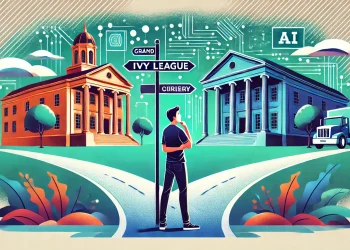No products in the cart.
Digital Thieves in a Modern India!
As India's digital economy expands, cybercriminals are finding new ways to scam unsuspecting victims. From impersonating law enforcement officers to orchestrating digital arrest scams, these fraudsters exploit fear and urgency to extort money. This article explores real-life cases, legal provisions, and government measures to combat digital fraud.
As Bharat has developed and its economy has grown, we have seen a massive influx of transactions and movement of money through digital mediums like UPI apps, Paytm, Google Pay, and various other banking apps. A multitude of businesses have moved towards digital transactions, and even more consumers now use digital methods to fulfill their requirements.
Naturally, this has also led to an increase in cybercrimes. The “digital thieves” are developing new and creative ways to carry out their nefarious activities, and the era of digital scams is now officially upon us. As per various news articles and awareness drives, the “digital thieves” most commonly impersonate law enforcement officers and agencies, scaring victims into believing that they have been caught red-handed and are headed for an immediate arrest.
They go on to demand payment in lieu of preventing or ‘saving’ the victim from arrest or ask for their personal information, including banking details and passwords. They may claim to have an arrest warrant or that an investigation is underway for online crimes. These scammers may contact victims via email, text message, or phone call, and they may even threaten immediate arrest.

Under Section 66C of the Information Technology Act, 2000, identity theft is punishable with imprisonment of up to three years and/or a fine of up to ₹1 lakh. Section 66D of the Information Technology Act, 2000, deals with cheating by personation using computer resources, punishable with imprisonment of up to three years and/or a fine of up to ₹1 lakh. If a person pretends to be someone else (e.g., a police officer) to falsely arrest or accuse another person, punishment of imprisonment of up to three years, a fine, or both can be imposed under Section 416 of IPC and Section 419 of IPC (now referred to as Section 319(1) & 319(2) of the Bhartiya Nyaya Sanhita, 2024, or BNS). Under Section 468 of the IPC (now referred to as 336(3) of BNS), forgery for the purpose of cheating is punishable with imprisonment of up to seven years and/or a fine. The government has taken steps to curb the rising instances of digital arrest scams by introducing an online database of known scam UPI IDs, mobile numbers, names, social media handles, and email addresses. This database (codenamed I4C) is hosted on the National Cyber Crime Reporting Portal.
Posing as customs and crime branch officers, the scammers told the victim that they seemed to be a victim of identity theft and needed to cooperate in order to avoid arrest.
In December 2023, the Uttar Pradesh Police launched a probe into a new cyber fraud trend known as ‘digital arrest’ after a Noida resident was duped of ₹11 lakh. This marked the first reported case of such fraud. In another case, a digital arrest victim received a call on May 4, 2024, from someone claiming to be from FedEx, alleging that a parcel in the victim’s name contained illegal items. Posing as customs and crime branch officers, the scammers told the victim that they seemed to be a victim of identity theft and needed to cooperate in order to avoid arrest.
A video titled “Digital Arrest: India’s Biggest Scam!”, narrated by Angad Kahai Singh, talks about the rising threat of digital arrest scams in India. Created by members of Vyre Media, a YouTube channel, this video explains how scammers pose as law enforcement officers or government officials on video calls, placing themselves in a setup that looks like a real police station or government office. The scammers deceive victims by accusing them of being linked to criminal activities, such as money laundering or tax evasion, and demand immediate payment to drop the case against them and avoid arrest. The video also shows the psychological manipulation tactics employed by scammers to create a sense of urgency and fear among victims.
The video delves into a segment that reenacts a digital arrest scam. In this scene, a woman receives a call informing her that an order made through her ID was stuck due to illegal products being found in it. After instilling fear of potential legal action, the scamster asks for money to make the case disappear. The video ends with the narrator providing tips and advice on how to identify and avoid digital arrest scams, such as noting that a police officer would never ask for money over a phone call and cannot arrest someone via a video call. The video also concludes by emphasizing the importance of reporting such incidents to the authorities and seeking help from the cybercrime division.
In Rafeeq Ahmad v. State of Karnataka (2015), the accused was involved in hacking several online banking accounts to transfer funds illegally. The legal provisions included Section 66 of the IT Act for hacking a computer system and Section 420 of the IPC for cheating and dishonestly inducing the delivery of property. The court convicted the accused under both sections, underscoring the severe consequences of hacking activities and financial fraud.
In Vinod Kaushik & Anr. v. Madhvika Joshi & Ors., the defendant was accused of accessing the email accounts of her father and father-in-law. The Court held the action unauthorized under Section 43 of the IT Act, 2000, and the defendant was found liable. The Information Technology Act, 2000 (IT Act) remains India’s primary law dealing with cybercrime.
An article in The Economic Times on January 9, 2025, stated that a person from Assam wanted to return a blazer worth ₹4,000 from Louis Philippe, a division owned by Aditya Birla Fashion. The State Bank of India (SBI), through which the transaction had taken place, blamed the victim for his irresponsibility and claimed that the fraudulent transactions occurred through Google Pay, a third-party app. The incident began when Louis Philippe’s website was hacked in 2021, and personal information was sold online. A fraudster called the victim, identifying themselves as a customer care representative, and explained that the blazer could only be returned if an app was installed on the phone. The fraudster then withdrew money from the victim’s SBI savings account, transferring it to a Federal Bank savings account, then to a Jupiter Neo savings account, and multiple other accounts using UPI and payment gateways. Within a few hours, the entire ₹94,204.80 stolen from the victim’s SBI account was withdrawn.
State of Karnataka (2015), the accused was involved in hacking several online banking accounts to transfer funds illegally.

The Honourable High Court found fault in SBI’s actions and ordered a full refund to the victim. However, SBI filed an appeal in the Gauhati High Court against this order, lost the case, and was directed to refund the victim and recover the money from the fraudster. Instead, SBI chose to appeal to the Supreme Court of India, which found SBI guilty and upheld the Gauhati High Court’s order, directing a full refund to the victim.
Since 2022, there has been a sharp rise in UPI-related frauds, amounting to a cumulative loss of ₹2,100 crore across 2.7 million reported incidents. The Indian government revealed that 84,000 cases of UPI fraud were reported in 2021-22, compared to 77,000 cases in 2020-21. These figures were disclosed amid the rising wave of online fraud cases across the country.
Thus, it is clear that as our digital economy develops and India becomes a hub for the digitization of monetary transactions, the issues surrounding cyber thieves and digital frauds also become equally important. The government’s role in generating awareness to prevent such acts, including spreading awareness through messages, videos, and social media platforms, plays a huge role in curbing and controlling the reach and scope of such “digital thieves.”
Legal References
- Information Technology Act of 2000
- Section 66C
- Section 66D
- https://www.meity.gov.in/content/information-technology-act
- Bhartiya Nyaya Sanhita of 2024
News Articles & Reports
- Editorial, “Noida logs first case of digital arrest, woman duped over ₹11 Lakh,” Times of India, December 4, 2023
- http://timesofindia.indiatimes.com/articleshow/105683261.cms?utm_source=contentofinterest&utm_medium=text&utm_campaign=cppst (Last visited January 31, 2025)
- Shreya Sur, “Digital Arrests on the Rise – Case Studies and Solution,” NDTV Profit
- https://www.ndtvprofit.com/nation/digital-arrest-scam-maharashtra-cyber-fraud-solutions (Last visited January 31, 2025)
- Editorial, “Cyber fraud: Supreme Court orders SBI to refund full money lost in an online scam to its customer,” Economic Times
- Editorial, “Unified Payments Interface (UPI) fraud cases surge by 85% in FY24: Ministry of Finance,” News Today
- Editorial, “More than 95,000 UPI fraud cases reported in 2022, here is how you can stay safe,” India Today
Cybercrime Reports & Blogs
- Law Influencers
- PhonePe Trust & Safety Blog, “Digital Arrest Scam – How to Stay Vigilant”
- ICLG Cybersecurity Laws & Regulations – India
Court Cases
- Rafeeq Ahmad v. State of Karnataka (2015)
- Vinod Kaushik & Anr. v. Madhvika Joshi & Ors. (2010)
Video Source
- YouTube Video: “Digital Arrest: India’s Biggest Scam!”
- https://www.youtube.com/watch?v=4VgIVXNzJ64 (Last visited January 31, 2025)











